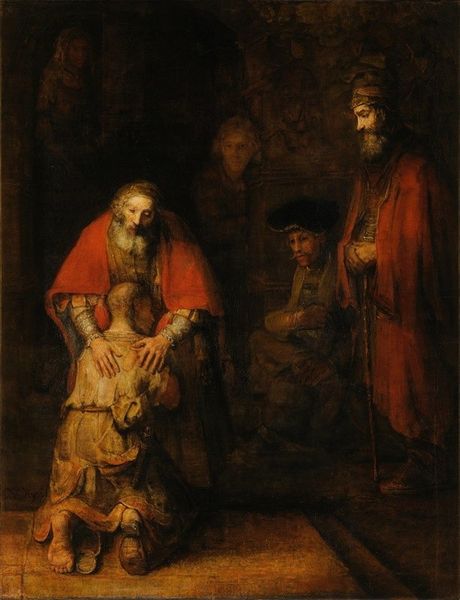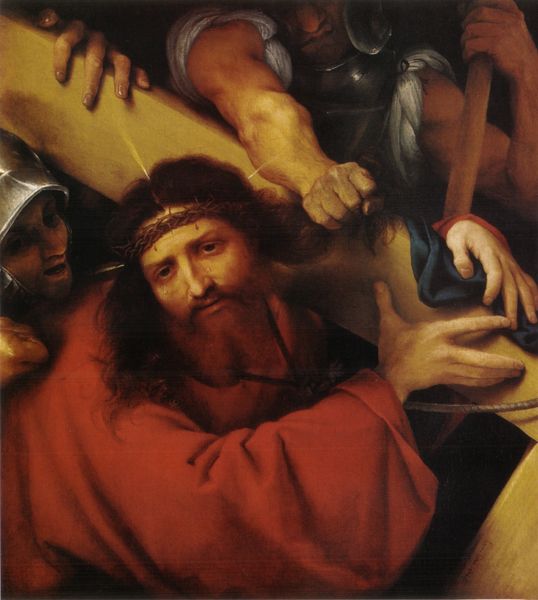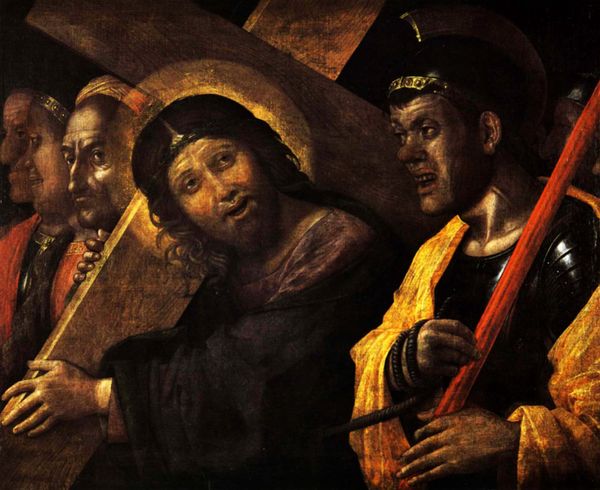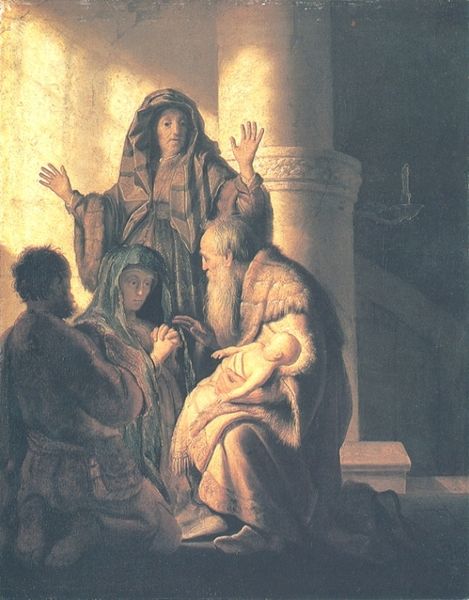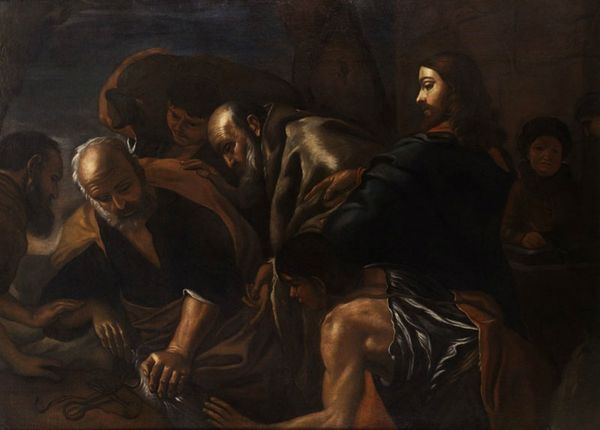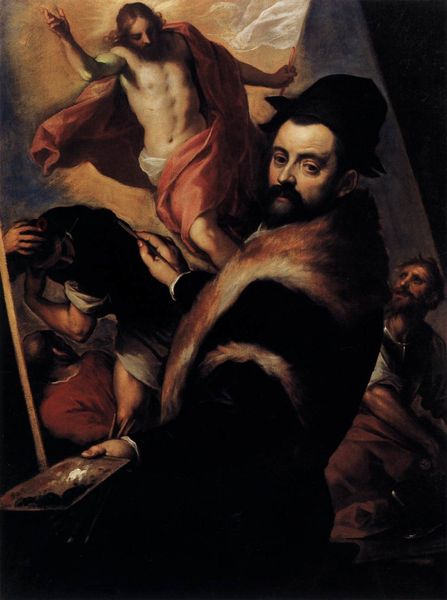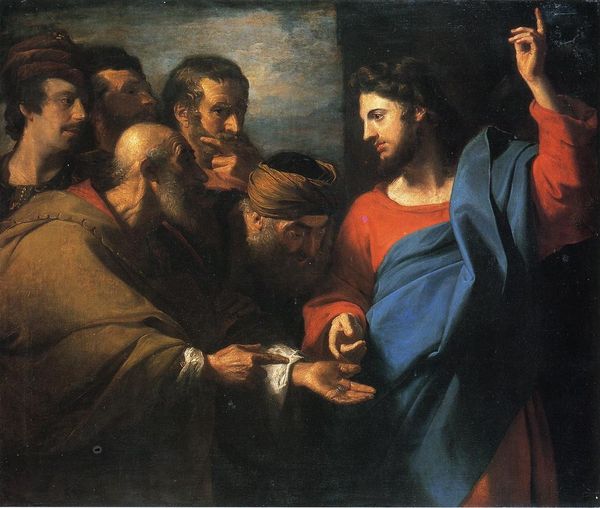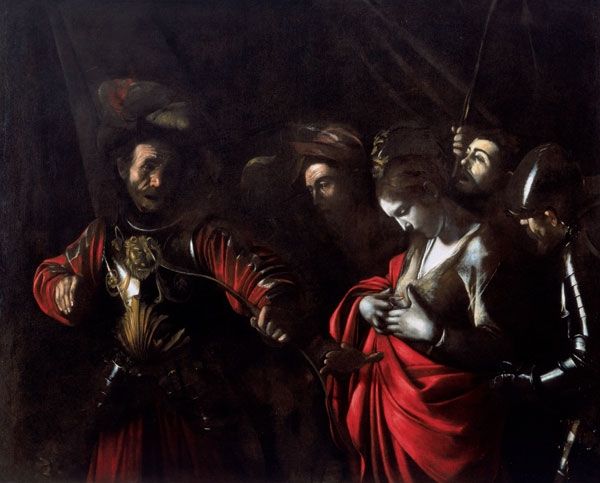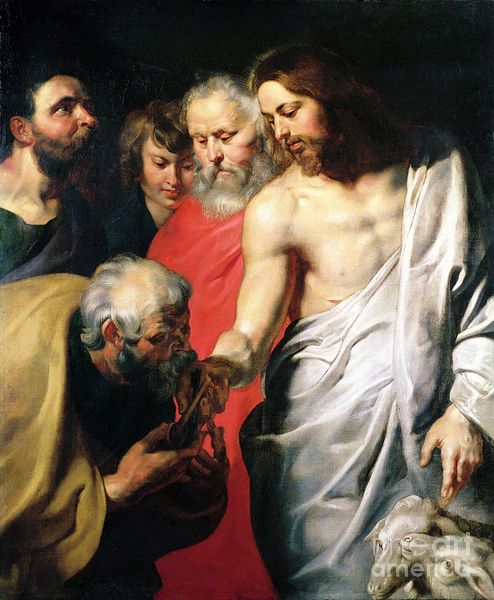
painting, oil-paint
#
portrait
#
narrative-art
#
baroque
#
dutch-golden-age
#
painting
#
oil-paint
#
figuration
#
chiaroscuro
#
men
#
history-painting
Dimensions: 117 x 127 cm
Copyright: Public domain
Curator: Let’s turn our attention to this compelling work by Rembrandt van Rijn, painted around 1665. Titled "David and Uriah," it resides here with us at the Hermitage Museum. Editor: My first impression is one of subdued intensity. The painting emanates a heavy atmosphere, both somber and charged, and that muted red palette is almost unsettling. Curator: Indeed. Rembrandt masterfully employs chiaroscuro, creating deep shadows that obscure much of the background. This focuses our attention on the three male figures and intensifies the drama unfolding between them. Note how the light delicately illuminates the face of the central figure, David. Observe how that meticulous detailing highlights his weary, almost tormented expression. Editor: Exactly. I see David, adorned in regal attire that almost feels like a costume here. His hand pressed against his chest is revealing guilt or remorse. This powerful portrayal isn't merely about aesthetic refinement. It grapples with themes of power, betrayal, and the human cost of ambition. Consider the context: Rembrandt painted this during a period of personal and national upheaval for the Dutch. Curator: The composition undeniably evokes empathy. It draws viewers into David’s internal conflict. Also, it presents an excellent illustration of Rembrandt’s loose, expressive brushwork that creates rich textural contrasts within the composition. Editor: And that older man peering out from the left, the sadness etched into his features – likely representing a prophetic figure aware of the tragic outcome. "David and Uriah" reflects Rembrandt's late-career preoccupation with narratives of moral ambiguity and personal suffering. How do we reconcile the glorified king with the flawed human capable of such a dishonorable act? Curator: A relevant question. The formal elements work cohesively to convey this message; that subdued palette mirrors that weight. The pyramidal composition, stable yet constrained, hints at underlying tensions and concealed emotions. Editor: So true! Seeing the intersection of Rembrandt’s artistic brilliance, the contextual framework that it grew out of, and the subject matter portrayed reveals a more nuanced image. Curator: Indeed. This work continues to resonate, inviting viewers to reflect on the complexities of human nature and the enduring power of visual storytelling.
Comments
No comments
Be the first to comment and join the conversation on the ultimate creative platform.
